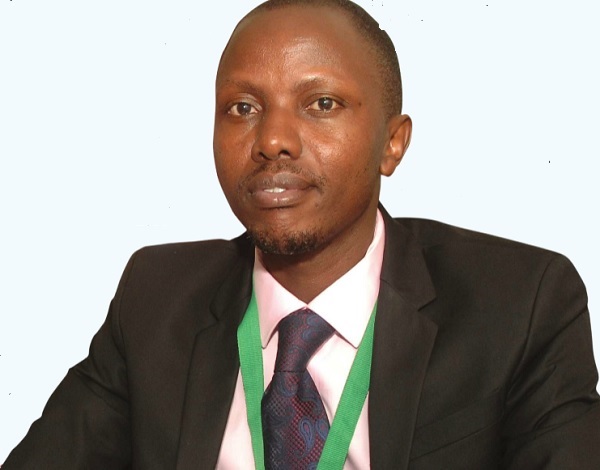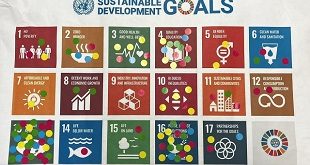
Joram Nyanzi is the general manager of Rift Valley Railways (RVR), the company that concessioned the assets of the former Uganda Railways Corporation. He spoke to Flavia Nassaka about their operations and other pertinent issues in the transport industry.
What are the key elements in your management philosophy as a CEO?
As a team leader for RVR, I believe in having a good team that can deliver effectively. That’s why I focus my energy on having the right people in the right places with the right attitude. Then we ensure that they are motivated to deliver to our customer’s expectations. Running a concession has several stakeholders like financial institutions and the governments of Kenya and Uganda which are our first clients and then the customers who give us business. We have to listen to them in order to remain relevant in the industry.
How would you rate your performance since your entry into East Africa?
To give a rating is not a simple thing. There are key performance indicators in the concession and if we are to evaluate each on its own you will realize that several have been achieved. But but if we relate those KPIs to what the government wants and the population expects, you will realise that they are changing from what we initially agreed. The interpretation of what makes this concession successful or not successful also differs. You will expect RVR to transport so many tonnes from Mombasa to Kampala and we will deliver them but when you look at the cost of operation, the company will be going down. There is need to review those KPIs in order to harmonise all positions and expectations. Overall however a lot could have been achieved by now but we are talking about a track that is 100 years old and was used when Uganda imported less than 10,000 tonnes. Right now we are looking at ten million tonnes of imports and we are using the same tracks. If you are looking at growth of cargo moving on rail you also need to assess the infrastructure, which was not a focus in the concession agreement. We would have achieved more if the infrastructure was considered and improved.
Which other logistics segment have you invested in?
When the concession was made, the government of Uganda expected massive investment in the railway business. Initially all the focus was on Kenya. They had more assets than us and the general opinion is that Kenya has benefitted more than Uganda. But, our main business here is rail and our responsibility is to use the assets that were given to us by the government to generate business. We are using these assets to innovate for instance we are now working with Total to produce a new type of tank to move fuel. These tanks called ‘ISO tanks’ are differing from the old ones in that there is more safety and security for products being moved. We have also modified our flat wagons such that transportation of steel is made more secure.
When it comes to improving efficiency, we have stopped moving containerised cargo into Kampala. We offload all cargo at our terminal in Mukono and the trucks go back to Mombasa. This has not only helped in decongesting the city but has also reduced transit time from 20 to 11 days, which has in turn increased the volume of cargo transported.
The East African countries are currently investing in the Standard Gauge Railway (SGR). Does that worry your operations in the region?
One of the things that we focus on at RVR and me as a manager is environment dynamics. With the SGR coming up we are already thinking of how it‘s going to play in the monopoly we have had. Its entrance doesn’t worry but makes us more attentive because our competitor is new which means the infrastructure is better and at the same time it’s a standard gauge – it’s more efficient than our one meter gauge. But what we see now are more opportunities because SGR is running in phrases now it’s running up to Nairobi which means we will use more of our assets to move cargo coming to Kampala. Our dedication in the short term is going to be on cargo from Mombasa all the way to Kampala. Even when SGR finally comes to Kampala it will take them time to go to different sidings. We have more established networks.
In your own analysis, do you think it was worth it for the East African governments to invest in a new railway network?
It’s a big and good investment but there was need to dedicate some funds to the one meter gauge first so that its put at a better level and then long term go to the standard gauge. The economic growth in the region and planned industrialization efforts all demand for an efficient railway system, which can be available if both SGR and the one gauge are working well.
How far have you gone with the passenger train in Kampala?
We partnered with Kampala City Council Authority (KCCA) which on behalf of government provides finance for the project. It’s a pilot scheduled to end in November. The plan was to run the train from Kampala to Namanve and see how that decongests the Jinja highway. The response has been massive because we started with 150 people using the train and now they are 750. The capacity for this route needs to be increased but also we are in the process of coming up with costing for other routes. We want to go to Port Bell and Nalukolongo such that people there can benefit. By January we will have increased the number of trips on the Namanve route and started on the other routes.
A section of the business community believes that you have not done enough in reducing the number of cargo traffic. What is your comment on this?
It’s not that everybody in the business community is not happy with RVR. Leading businesses like Vivo, Total, Roofings Uganda, Madhivani, Bakharesa and freight forwarding companies like Spedag dedicate their cargo to us. There have been several challenges and we are working on them. For instance, previously we had to call Nairobi to get things done but now I am here. However we have a bigger area to cover with limited capacity. We had to take tough decisions that hurt other players when we chose to partner with only a few companies to whom we dedicated the assets. There is a given percentage of Ugandans who we are reaching out to asking them whether they are willing to partner with us long term. If they do then those perceiving us not to be doing enough will go down.
What are some of the challenges you still face?
Unlike Kenya, the issue with Uganda is that there are several routes that were abandoned. For example we no longer go to Kasese, the Tororo – Gulu track was rehabilitated in 2013 but it’s not used because if you are to move to Gulu you need handling equipment but there’s none. The cost of running a track there would be high if we are to use the available infrastructure.
We also have a lot of fuel siphoning – a vice that is condoned by some communities and yet loco motives use a lot of fuel. My initial efforts have been to combat this because we lose about Shs15m worth of fuel per week. This is a lot if we are to turn around this business. We started with internal cleaning but soon we will start arresting the buyers.
What are the future plans for RVR in the region?
The government notified us about some areas we need to improve. These include maintenance of the assets and increasing tonnage. Currently we are focused on working out our differences. For instance the issue of taxation was reported in the media. This is a legal issue that both government and Uganda Railway Corporation know about. VAT on a concession is not applicable but then when you go deeper into interpretations then the legal minds come in. If you levy taxes on the fees we are making for the government then you are constraining our cash flow and thus limiting business growth.
****
editor@independent.co.ug
 The Independent Uganda: You get the Truth we Pay the Price
The Independent Uganda: You get the Truth we Pay the Price



